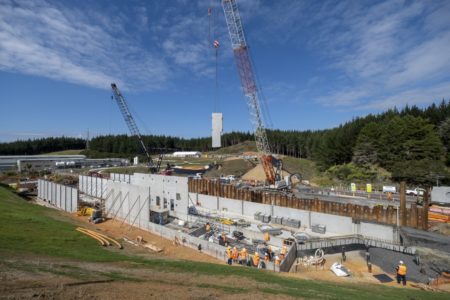
More dry weather means Auckland’s dams may again drop below half full, but Council controlled organisation Watercare says the city’s water supply is in a better position this year thanks to its new water sources and the community’s ongoing water-saving efforts.
The total dam storage level is currently 50.26 per cent, where normally at this time of year it would be about 76 per cent.
Auckland Mayor Phil Goff says, “The $224 million of investment we’ve made to boost the city’s water supply, combined with 17 billion litres of water saved by Aucklanders and improved leak detection mean that, although our dams are approaching the 50 per cent mark, we are in a significantly more resilient position than last year.
“Had we not taken these steps to increase supply and reduce usage and leaks, our dam levels would likely now be approaching 30 per cent–a far more serious position than we are currently in.
“However, we do not know how much rain the winter will deliver so it’s important that Aucklanders keep up with their water savings efforts.”
Watercare chief executive Jon Lamonte says with no rain expected until next week, dam storage is likely to drop below half full by the weekend.
“It’s important to keep in mind all the work that’s been done over the past year to add resilience to Auckland’s water supply and prepare us for yet another dry year.
“Since restrictions were put in place last May, we have built two new water treatment plants in Pukekohe and Papakura and boosted production capacity at our Waikato water treatment plant.
“Work on our new water treatment plant in Waikato is also progressing steadily and when the first stage is completed this winter, it will provide up to 50 million litres a day. This provides a good safety net if the rest of the year turns out to be drier than anticipated.”
Lamonte says Aucklanders can also take their share of the credit: “Aucklanders have heeded our calls to treat water as a precious resource and use it wisely. Together we’ve met our consumption targets every month, and we continue to do so.
“We’ve saved almost 17 billion litres of water since restrictions began. To put that in perspective, that’s more than what we can hold in Upper Mangatawhiri Dam in the Hūnua Ranges, our second largest dam,” says Lamonte.
“Now we need to keep up the good work. The best way to save water in winter is simply to take shorter showers – keep them to four minutes or less.”
Watercare’s proactive leak detection programme has also resulted in significant savings.
More than 4300 kilometres of the 9000km water network have been surveyed. Fixing these invisible leaks has contributed to water savings of about 6.7 million litres a day.
Other projects underway as part of the drought response include the permanent Papakura Water Treatment Plant, which will boost supply by another 6 million litres a day, and an upgrade of the Waitākere Water Treatment Plant, which will lift capacity by 8 million litres a day.
By the end of this year, we will have increased our peak supply by more than 100 million litres a day, mostly with non-dam sources. That amount of water would provide for 330,000 people – equivalent to the combined populations of Palmerston North, Tauranga and Hamilton.









